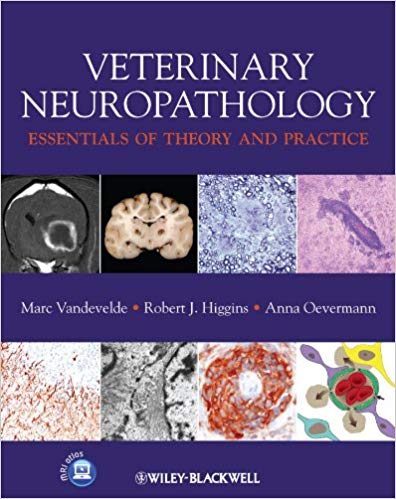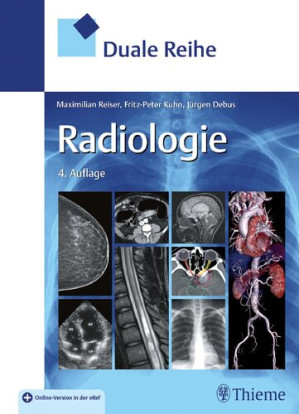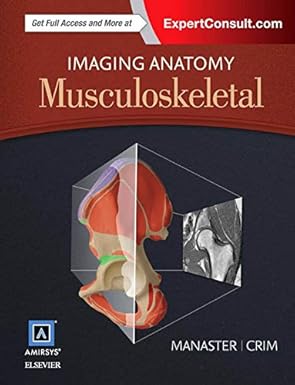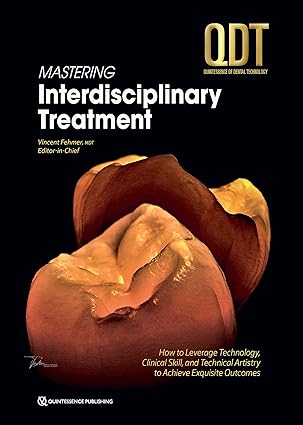Introducing the theoretical and practical basics of veterinaryneuropathology, this concise and well illustrated book is anessential basic diagnostic guide for pathologists, neurologists anddiagnostic imaging specialists. It presents readers with strategiesto deal with neuropathological problems, showing how to interpretgross and histological lesions using a systematic approach based onpattern recognition.
It starts with an overview of the general principles ofneuroanatomy, neuropathological techniques, basic tissue reactionpatterns, and recognition of major lesion patterns. The bookgoes on to cover vascular diseases, inflammatory diseases, trauma,congenital malformations, metabolic-toxic diseases, neoplasia anddegenerative diseases mainly of the central nervous system. In therespective chapters pathologists can quickly find information tosupport their daily diagnostic workup for both small and largedomestic species. Based on the authors’ extensivediagnostic and post graduate teaching experience as well as theinclusion of MRI as it relates to neuropathology, this book alsooffers a comprehensive but basic analysis of veterinaryneuropathology that neurologists and other MRI users will find veryuseful.
• An essential manual for daily diagnostic work
• Richly illustrated with high quality colour gross,histological and MRI images
• Includes a section on the function and use of MRI (byJohann Lang, DECVDI)
• Accompanied by a website presenting MRI sequences forinterpretation and correlation with neuropathological findingsedited by Johann Lang (University of Bern, Switzerland) and EricWiesner (University of California, Davis, USA)
چکیده فارسی
این کتاب مختصر و مصور با معرفی مبانی نظری و عملی آسیب شناسی عصبی دامپزشکی، راهنمای تشخیصی اساسی ضروری برای پاتولوژیست ها، نورولوژیست ها و متخصصان تصویربرداری تشخیصی است. این استراتژی به خوانندگان ارائه می دهد تا با مشکلات نوروپاتولوژیک برخورد کنند، که نشان می دهد چگونه ضایعات درشت و بافت شناسی را با استفاده از یک رویکرد سیستماتیک بر اساس تشخیص الگو تفسیر کنند.
با مروری بر اصول کلی نوروآناتومی، تکنیکهای نوروپاتولوژیک، الگوهای واکنش بافتی اولیه و شناخت الگوهای ضایعه اصلی شروع میشود. این کتاب به بیماریهای عروقی، بیماریهای التهابی، تروما، ناهنجاریهای مادرزادی، بیماریهای متابولیک سمی، نئوپلازی و بیماریهای دژنراتیو عمدتاً سیستم عصبی مرکزی میپردازد. در فصل های دیگر، آسیب شناسان می توانند به سرعت اطلاعاتی را برای پشتیبانی از اقدامات تشخیصی روزانه خود برای گونه های کوچک و بزرگ بیابند. این کتاب بر اساس تجربیات گسترده نویسندگان در زمینه تشخیصی و تدریس پس از فارغ التحصیلی و همچنین گنجاندن MRI در ارتباط با آسیب شناسی عصبی، تجزیه و تحلیل جامع اما اساسی از آسیب شناسی عصبی دامپزشکی را ارائه می دهد که متخصصان مغز و اعصاب و سایر کاربران MRI آن را بسیار مفید خواهند یافت.
• یک کتابچه راهنمای ضروری برای کارهای تشخیصی روزانه
• با تصاویر رنگی ناخالص، بافت شناسی و ام آر آی با کیفیت بالا نشان داده شده است
• شامل بخشی در مورد عملکرد و استفاده از MRI (توسط یوهان لانگ، DECVDI)
• همراه با وبسایتی که توالیهای MRI را برای تفسیر و همبستگی با یافتههای آسیبشناسی عصبی ارائه میکند که توسط Johann Lang (دانشگاه برن، سوئیس) و EricWiesner (دانشگاه کالیفرنیا، دیویس، ایالات متحده آمریکا) تنظیم شده است.
ادامه ...
بستن ...
Ebook details:
عنوان: Essentials of Theory and Practice
نویسنده: Marc Vandevelde; Robert J Higgins; Anna Oevermann
ناشر: Wiley-Blackwell; 1 edition (November 28, 2012)
زبان: English
شابک: 0470670568, 978-0470670569
حجم: 88 Mb
فرمت: True Pdf
ادامه ...
بستن ...









![Clinical Management of Swallowing Disorders (6th Edition) [2025] - Orginal Pdf Clinical Management of Swallowing Disorders (6th Edition) [2025] - Orginal Pdf](https://dl.libsan.ir/images/1/12/Clinical Management of Swallowing Disorders_68fdc2997972e.webp)
